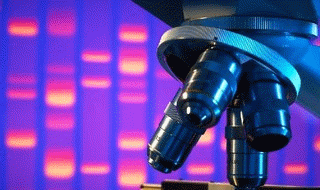 DNA profiling (DNA fingerprinting) is a technique employed by forensic scientists to assist in the identification of individuals by their respective DNA profiles.
DNA profiling (DNA fingerprinting) is a technique employed by forensic scientists to assist in the identification of individuals by their respective DNA profiles.
The use of recombinant DNA technology has become common place as new products from genetically altered plants, animals, and microbes have become available for human use.
In 1997, Dolly made headlines as the first successfully cloned large mammal (sheep). Since then there have been many similar advances in medicine, such as treatments for cancer; many advances in agriculture, such as transgenic insect – resistant crops; and many advances in animal husbandry, such as growth hormones and transgenic animals (an animal that has received recombinant DNA). Most biotechnologists envision DNA technological applications as one of the new frontiers in science with tremendous growth and discovery potential.
Gene therapy is a novel approach to treat, cure, or ultimately prevent disease by changing the expression of a person's genes. Gene therapy treats disease by "repairing" dysfunctional genes or by providing copies of missing genes.
Forensic Evidence: DNA is present in nearly every cell of our body, and we leave cells behind everywhere we go without even realizing it. Flakes of skin, drops of blood, hair, and saliva all contain DNA that can be used to identify us. In fact, the study of forensics, commonly used by police departments and prosecutors around the world, frequently relies upon these small bits of shed DNA to link criminals to the crimes they commit.
 Golden rice – One of the examples of transgenic crops
Golden rice is a variety of Oryza sativa rice produced through genetic engineering to biosynthesize beta–carotene, a precursor of vitamin A, in the edible parts of rice.
Golden rice – One of the examples of transgenic crops
Golden rice is a variety of Oryza sativa rice produced through genetic engineering to biosynthesize beta–carotene, a precursor of vitamin A, in the edible parts of rice. Transgenic organisms: Also referred as genetically modified organism (GMO). It is an organism whose genetic material has been altered using genetic engineering techniques. Organisms that have been genetically modified include micro–organisms such as bacteria and yeast, insects, plants, fish, and mammals. GMOs are the source of genetically modified foods, and are also widely used in scientific research and to produce goods other than food.